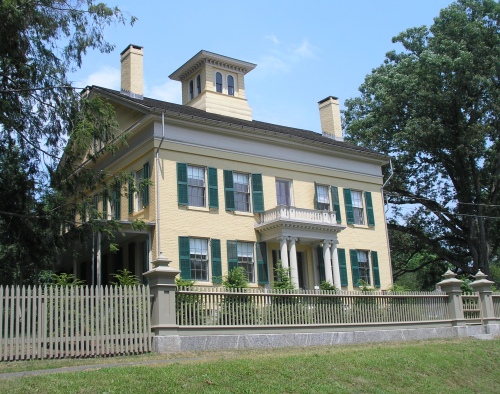Emily Dickinson Homestead (1813)

The Emily Dickinson Homestead in Amherst was built in 1813 for Samuel Fowler Dickinson, a lawyer and a principal founder of Amherst College, and his wife Lucretia Gunn Dickinson. Pledging his personal property in support of educational endeavors eventually left Samuel Fowler Dickinson bankrupt. In 1833 he sold the house and later moved to Ohio. David Mack, owner of a general store, purchased the house, but Dickinson’s son, Edward, purchased half the house and lived there until 1840 with his wife, Emily Norcross Dickinson, and their children. After living in another house on Pleasant Street (no longer standing), Edward Dickinson purchased the entire Homestead and moved back in with his family in 1855. He soon made improvements, building a rear addition, a veranda on the west side and a conservatory. He also added the distinctive cupola to the roof. Edward also built a house, the Evergreens, next door for his son, William Austin Dickinson, in 1856. His unmarried daughters, Emily and Lavinia, lived in the house after the deaths of their parents. Emily Dickinson (1830-1886), who had been born in the house, had her most productive period as a poet there between 1858 and 1865. After Lavinia’s death in 1899, the house passed to her niece, Martha Dickinson Bianchi, who leased it to tenants. From 1916 to 1965, the Homestead was owned by the Parke family, who then sold it to Amherst College. Opened for tours, the Homstead later joined with the Evergreens to form the Emily Dickinson Museum in 2003. The Emily Dickinson Homestead was painted in its original late-nineteenth-century colors in 2004.